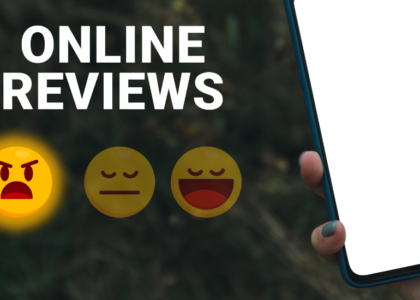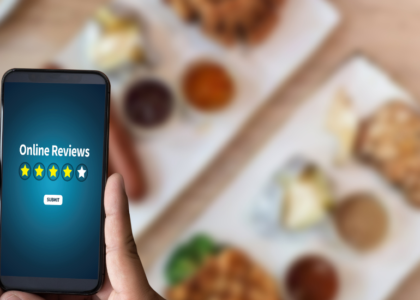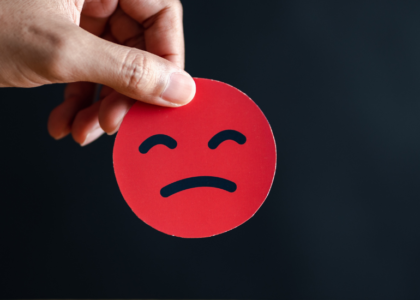There are all the types of email campaigns you should set up for your online retailer business. And a lot of these should be automated into email journeys or sequences.
Lifecycle email campaigns
Customer lifecycle emails are campaigns you send to your customers, depending on where they are in their journey. These campaigns are designed to help you engage and retain customers at every buying cycle stage, improve conversion rates, and boost your overall customer retention.
Here are some of the main types of lifecycle email campaigns
Abandoned cart emails
Cart abandonment emails are the most lucrative email flow because they allow you to target customers who have just added something to the cart, but didn’t complete the checkout process. They have the highest buying intent in your entire mailing list.
Studies show that cart abandonment campaigns get up to 50% open rates and almost 9% in CTR.
Here’s a great example of an abandoned cart email from Allbirds:
Some cart abandonment best practices include:
- Display the product the user added to their cart (most email tools have this feature)
- Have a clear CTA (always important)
- Show other similar products below the main product image
- Send 3-4 follow-up emails and space them out (30 minutes, 1 hour, 3 days, 7 days)
- Add customer reviews and social proof
Browser abandonment
You guessed it, this email campaign is an advanced strategy that helps you target customers who haven’t added anything to the cart yet, but browsed your site and then left. Keep in mind that you can employ this type of digital marketing tactic if you have their email addresses, which is only possible if they have previously left their email on your site.
Browse abandonment messages are very similar to cart abandonment email campaigns in the sense they’re both behavioral email campaigns (e.g., emails triggered based on customer behavior.)
However, when setting up a browser abandonment flow, you need to make sure you employ tactics that speak to the intent behind the user’s behavior – they browsed, showed interest, but didn’t buy. This means they could, in fact, be looking for:
- Cheaper alternatives
- Better value for money
- Different product features/styles
So, it’s important to make sure your email campaigns address the shopper’s needs and wants. So, here are some browser abandonment tactics you should try:
- Remind your customers what they liked. Show them the same products they browsed on your site
- Segment based on how many times the user viewed a product
- Create a sense of urgency (like a countdown timer or offer)
- Include UGC and customer reviews
- Use a variation of your best-performing cart abandonment emails
- Focus the message on the text
- Show images
- Throw in an incentive
- Use an engaging call to action
Pro tip: Need a boost of creativity? Want to nail your click-to-open rate? Check out our list of the top browse abandonment subject lines.
Post-purchase and transactional email campaigns
Email isn’t just used to convert a visitor to a customer, it’s also critical in delighting the customer after their shopping session and turning them into an ambassador for your brand.
Here are the transactional emails / post-purchase emails you need to send after the customer purchases your product:
- Order confirmation
- Shipping confirmation
- Delivery confirmation
- Order follow-up (feedback request)
- Thank you email
Remember: you shouldn’t look at transactional emails as just an information-driven communication. Take the opportunity to shape these emails into relationship-building messages and differentiate your brand from the competition.
Order confirmation email
The most crucial email post-purchase is the order confirmation email. This is your chance to provide a confirmation for the customer, display all the relevant information for them, set delivery expectations, and showcase your brand.
Order confirmations are among the most common types of eCommerce emails. To make them better (and more effective at driving revenue for your store), try to incorporate the following tactics:
- Product upsell: include a product recommendation (it can be for a higher-tier product than the one they purchased or a complementary one)
- Discount codes and free shipping: share discount codes or free shipping vouchers to incentivize them to come back to your store;
- Invite customers into your community: encourage your audience to follow you on other channels as well, or invite them into a close-knit online community to foster a sense of belonging, forge your relationship with them, and gather insight from their behavior there.
- Include the order details: make sure to include the order number, shipping and billing address, items purchased, and any other relevant information.
- Set delivery expectations: provide an estimated delivery date or tracking information for the customer to keep them updated on their order.
- Showcase your brand: add in a personal touch or showcase your brand’s personality through the email design or messaging. This will help strengthen the customer relations and entice them to come back to your store.
- Add all return and guarantee information: It’s important to include information about returns and guarantees in case the customer needs to refer back to it later.
- Add a nice picture of the product(s) your customers have purchased: Doing this will help you keep them excited about their deliveries
Shipping notification
The next customer touchpoint is the shipping notification email. This is where you notify the customer that the product has been shipped. It’s a great time to present your shipping insurance if you have one, your return policy, and any other guarantees that will increase the customer’s trust in your brand.
Your customers are eager to know when their order is shipped and when it will arrive at their doorstep. This eCommerce email classic should provide all the necessary information about shipping, tracking numbers, estimated delivery dates, etc.
Sometimes, even a simple, yet sincere post-purchase “Thank you email” with a quick shipping information note can make a world of difference in how customers perceive you – so make sure to implement this type of campaign.
Shipping notification best practices include:
- Display the delivery date front and center
- Use a visual delivery app like Route to display the product in transit
- Invite your customer to interact with your social media pages
- This is a great place for a referral program widget (for products with smaller AOV)
Pro tip: Include a catchy message or call-to-action (CTA) in your shipping confirmation emails that encourages customers to share their purchase on social media or leave a review.
Delivery confirmation
Once the product arrives you should send a delivery confirmation email. This is a great time to showcase a video with instructions on how to use the product, a short 30-60 second clip on how to unbox properly (if you’re a mattress brand), and show user-generated content to give your customer some ideas of how other people use your product.
The main elements of a perfect delivery confirmation email include:
- Display the order & shipping details
- Show a picture of the exact product(s) delivered
- Provide all the necessary info to return or exchange the item
- Provide all the ways your brand can be reached for questions
- Display similar products
- Ask for a review or a rating of the customer’s experience
Thank you emails
Thank you emails aren’t mandatory, for sure — but they can make a world of difference in how your audience perceives you and the kind of relationship you build with them.
To make sure your “Thank you” email does its job, remember to:
- Keep it short and simple: there’s no need to expand it unnecessarily;
- Use engaging CTAs: motivate people to come back to your store;
- Make it social-worthy: the more shareable your Thank You message/ page is, the more people will want to spread the word about your brand
Review/feedback requests
After the product is delivered it’s a great idea to ask the customer for feedback and a review. The timing of this email is obviously going to depend on the particular product and industry of the brand.
If it’s a hair product in the $30-$50 range there’s a good chance that the customer will use it within the first week of receiving it. If it’s a suitcase, the customer might have plans to travel somewhere and you might want to wait 1-2 months before asking for a review.
Here are some tips to help you make the most out of your feedback collection efforts:
- Focus on your shoppers: Customer satisfaction should be your North Star, not sales, so be genuine and open;
- Make it easi for customers to respond: Add the survey on your website to maximize your chances of collecting as many responses as possible;
- Negative feedback can propel growth too: Follow up with dissatisfied customers to see what went wrong and how you could make it up to them or improve your product/ service for the future;
- Make the most out of the feedback you receive. Add the reviews to the product pages because they Follow up can act as social proof and convince undecided customers to buy from you.
Upsell / cross-sell
Upsells and cross-sells are a great way to make product suggestions based on the type of products your shoppers bought from you. Because they’ve already made a purchase, including product recommendations on complementary products can increase the odds they’ll add a new item to their cart and buy more from you.
Timing is key to making sure your product recommendations fall on ome brands sell an upsell or a cross-sell email on the first email in the welcome flow (after the customer purchases the product). Other brands send the cross-sell offer with a complimentary product 30-45 days after purchase.
Promotional emails
Promotional emails frequently make the bulk of the emails included in an eCommerce business’ strategy. There’s more to running promotions than Black Friday campaigns, though. For example, here are some types of commercial emails you could consider:
- New products
- Time-sensitive
- Seasonal promotions (April’s Fools, winter holidays, Mother’s Day, etc.)
- Subscriber discounts
- Product newsletters
- Content marketing promotion
- Upsell and cross-sell emails
- Restock emails
- Date-based emails (such as anniversary emails, for example)
The most common use of email marketing is to send a promotional campaign around a holiday or a special event. These are really built for those subscribers who are motivated by discounts and should be used sparingly.
If you send too many promotional emails without talking about your brand and product value you will eventually exhaust your list and decrease your customer lifetime value.
To create promotional campaigns that drive sales, remember to:
- Display a prominent, eye-catching image at the top: This helps draw the audience in and it makes them more likely to buy.
- Make sure the offer and CTA are clearly visible: People don’t have too much time to scramble through an email to look for your offer. Rather, make sure they can see it clearly and click in just a few seconds so you don’t lose their interest.
- Include content about your brand: Remind people why they are subscribed to your email list. Tell them what’s going on in your company and if you’ve achieved any milestones or launched new products. It helps build trust and reinforce brand loyalty.
- Add UGC (user-generated content) images: Social proof is a powerful tool in marketing, especially for online retailers (63% of consumers will more likely buy from a store if they see images and videos from other customers.) Including images or videos of happy customers using your product can be the final push needed to convince someone to buy.
- Use scarcity and urgency tactics: Creating a sense of urgency and scarcity helps create FOMO (fear of missing out) which can drive people to purchase before the offer expires. For example, including a countdown timer or limited stock availability can encourage people to act quickly. However, be careful not to overuse these tactics as it can create distrust and damage your brand’s reputation.
Welcome emails
Welcome emails have two main goals: the primary one is to, well, welcome customers and users — similar to what you would do if they stepped into your brick-and-mortar store for the first time. The second objective is to motivate new subscribers and customers to make a purchase, start using the product, or even upgrade to a better plan/ option.
Here’s how to make your welcome emails stand out:
- Offer value: Give subscribers an incentive to make their first purchase or take action. You could offer a discount, free shipping, or even exclusive content if your audience is interested. You could also offer training on maximizing the power of your product or service.
- Tell your story: Use this opportunity to provide background on your brand and explain what makes you special. Make sure to highlight any unique selling points (USPs) and give customers a reason to return.
- Include a CTA: Tell your audience what action you want them to take, whether it’s subscribing for updates, following you on social media, or emailing you with any questions. Show you’re not just an email in an inbox, but an entire comms system ready to pick up on the conversation with your customers.
- Time it right: All emails should be timed right, but it is paramount to ensure that your welcome email is sent as soon as possible. This will help to make a good first impression and keep the customer’s interest high.
- Make it personal: Personalization can go a long way toward increasing engagement and conversions. Address customers by their name, segment your list so you can tailor content to specific audiences, and use data from previous interactions with your brand.
- Set the right expectations: It’s important to set the right expectations in your welcome email. Let customers know what they can expect from future communications, such as frequency of emails, types of content, and any special offers they may receive. This will help to manage their expectations and prevent them from becoming overwhelmed or disengaged with your brand.
Winback email campaigns
Winback email campaigns are meant for customers who have become inactive or stopped purchasing from your brand altogether. These re-engagement campaigns can help re-engage these customers, bring them back into the sales funnel, avoid churn, and increase customer retention and customer lifetime value.
Here’s an unignorable winback email from Duolingo (the subject line says “You made Duo sad”, by the way.)
Some ideas for winback emails include offering a special discount, highlighting new products or features that may interest them, or asking for their feedback on why they stopped engaging with your brand. It’s important to make these emails stand out — use creative subject lines, eye-catching visuals, and personalized content to grab the customer’s attention and entice them to come back.
Generally, some of the most important best practices to keep in mind with winback emails include:
- Timing is key: Send winback emails after a certain period of inactivity, but not too soon or too frequently. You want to give the customer time to potentially make another purchase, but also don’t want them to forget about your brand completely.
- Personalization: Use data from previous interactions and purchases to personalize the content of your winback emails. This can help re-engage customers and remind them of why they were interested in your brand in the first place.
- Make it valuable: Offer something of value to the customer, whether it’s a discount, special offer, or exclusive content. This can motivate them to come back and make another purchase.
- Keep it simple: Don’t overwhelm customers with too much information or too many calls to action — keep the email simple and focused on encouraging them to take action.
- Test and analyze: As with any marketing campaign, it’s important to test different elements of your winback emails, such as subject lines, visuals, and offers. Use data analysis to see what works best for your audience and make adjustments accordingly.
Referral emails
Referral emails and rewards programs can be a powerful tool for increasing brand awareness and acquiring new customers. By encouraging your existing customers to refer their friends and family, you can tap into their networks and potentially reach a whole new audience.
Some tips for creating effective referral emails include:
- Make it easy: Don’t make the process of referring too complicated or time-consuming. Make it as simple as possible for customers to share your brand with their network.
- Offer incentives: Incentivize both the referrer and the new customer with a special offer or discount. This can motivate them to take action and also show appreciation for their support.
- Provide social proof: Include testimonials or reviews from happy customers to show potential new customers why they should trust and try your brand.
- Segment your list: Segment your list and tailor your referral emails to different target audiences. For example, you may have a separate email for loyal customers who are more likely to refer their friends compared to new customers.
- Follow up: Don’t forget to follow up with both the referrer and the new customer after the referral
Sources: mayple.com, and mailchimp





